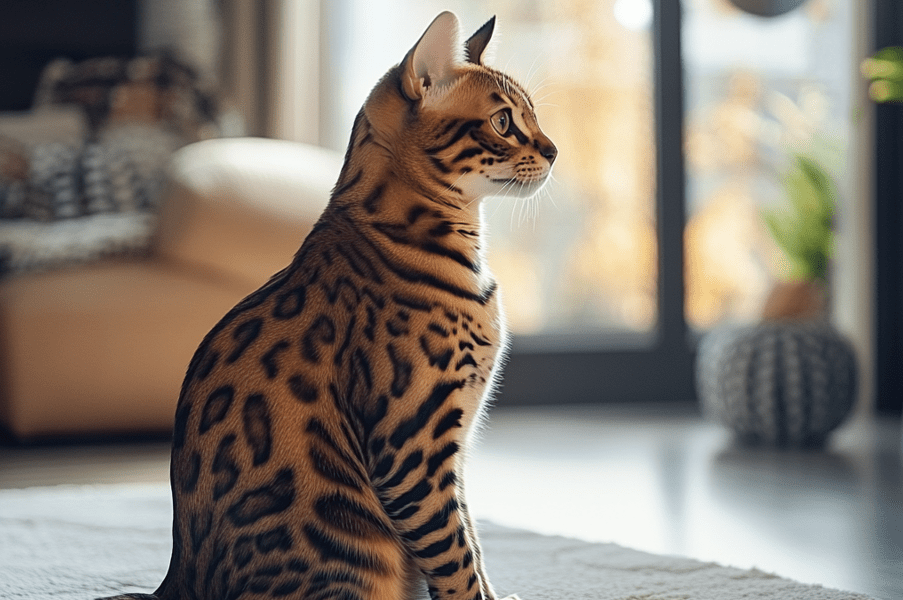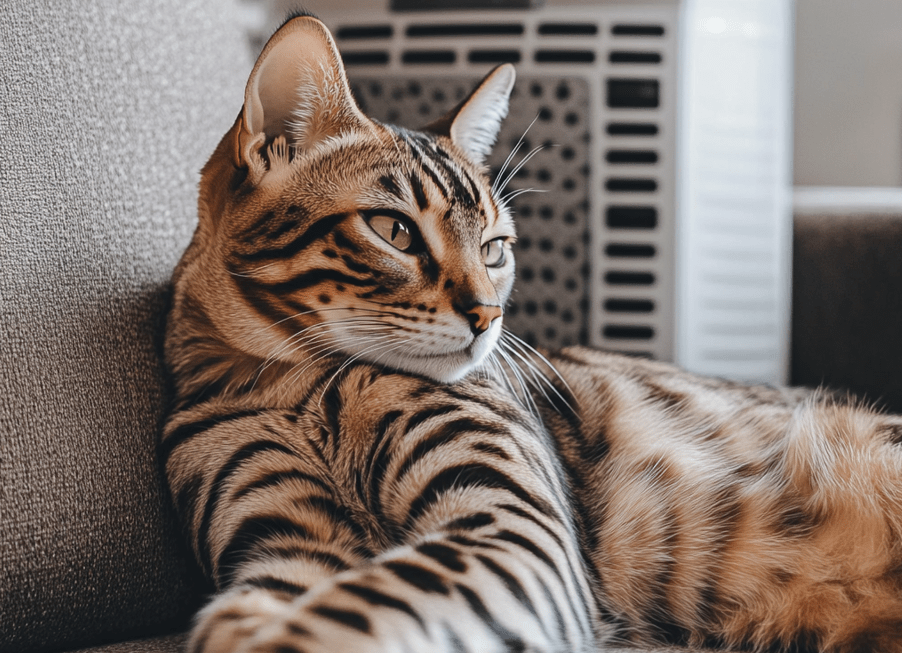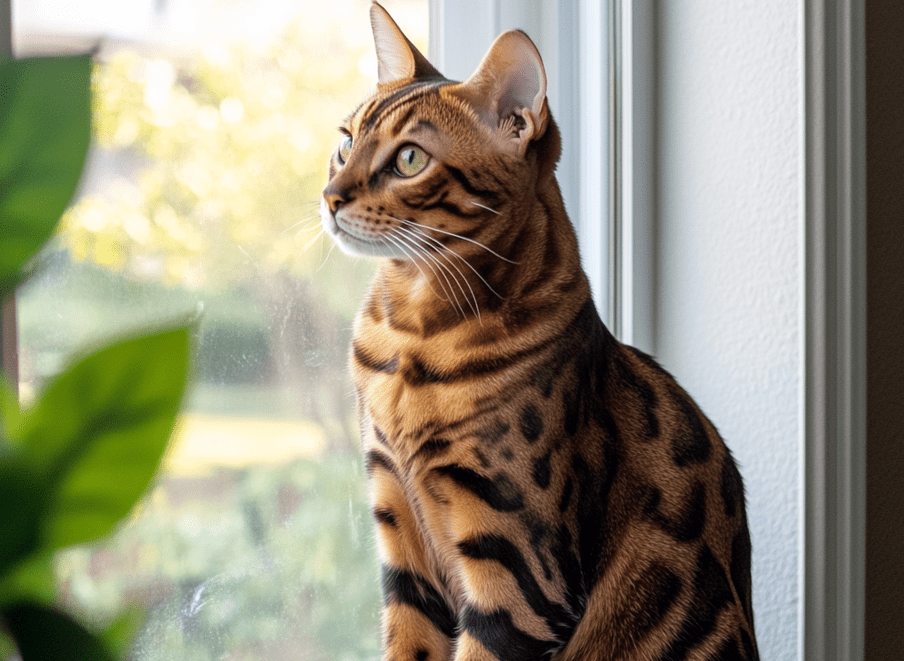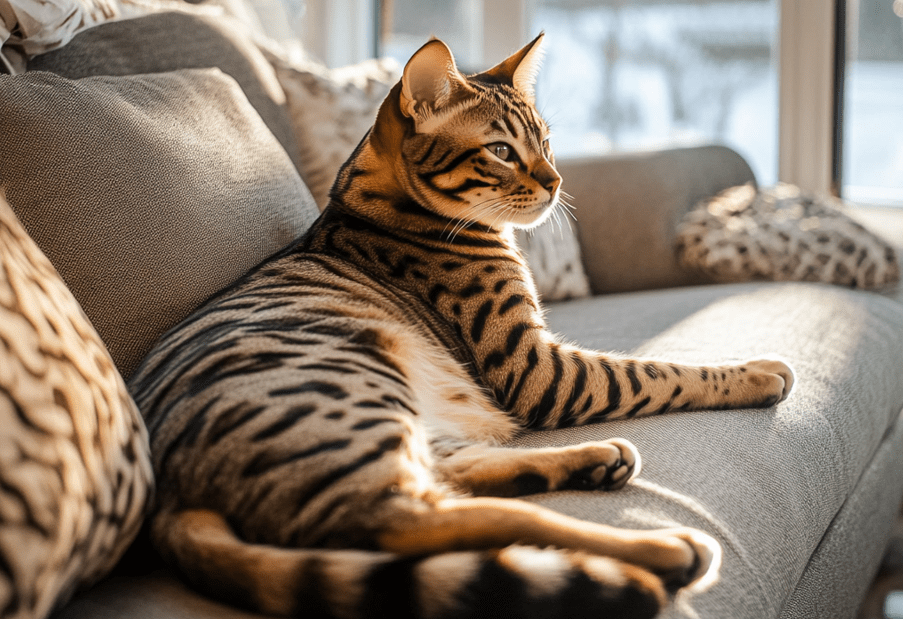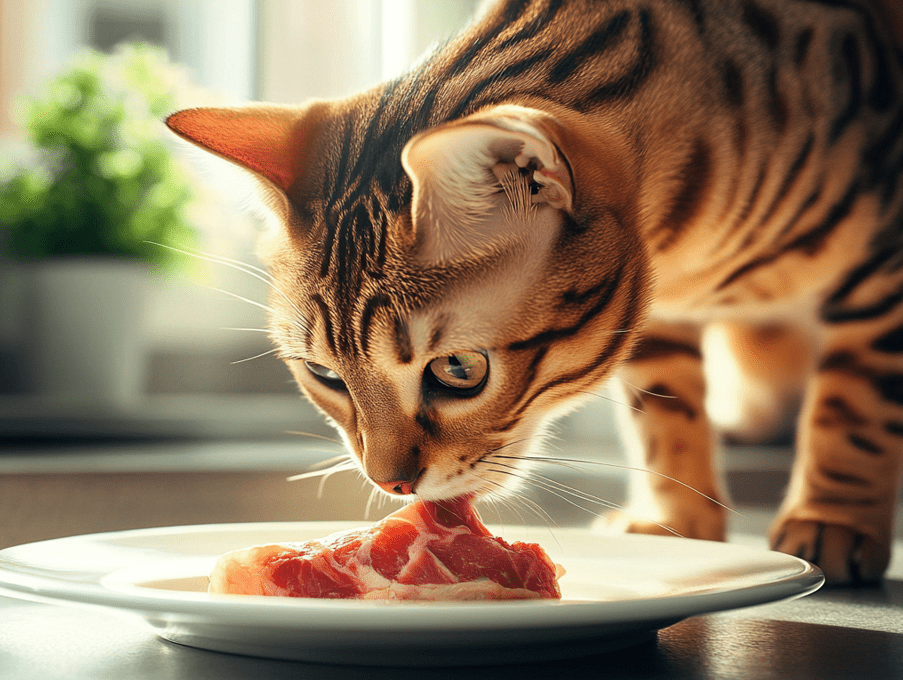
All cats have the same nutritional needs: they are obligate carnivores, meaning they must eat meat to survive and cannot obtain nutrition from plants. The healthiest food to feed your cat is a balanced carnivorous diet. All cats must eat meat to survive, and they do not get nutrition from plant matter. Nutrients found in meat and only meat are essential for their survival. Understanding the Bengal cat diet is essential for pet owners who want to maintain their optimal health. Let’s discuss the key considering factors one by one –
Cat’s Digestive System and Raw Meat
A cat’s digestive system is specialized for handling raw meat. Its parts remain smaller compared to the human digestive system because protein and fat are highly digestible for cats. A small digestive system helps cats process food very quickly. Food transit time is 12-16 hours, compared to 35-55 hours in humans!
Does a wild cat that catches mice in your yard first cook the mouse over fire? No! It eats it raw, and a Bengal cat is no different.
Notably, dry food that sits on shelves for months or even years is much more likely to be filled with harmful bacteria than fresh pieces of raw meat!
Occasional grass nibbling provides extra fiber and enzymes to help maintain maximum efficiency of the cat’s small digestive system.
Cats as Natural Predators
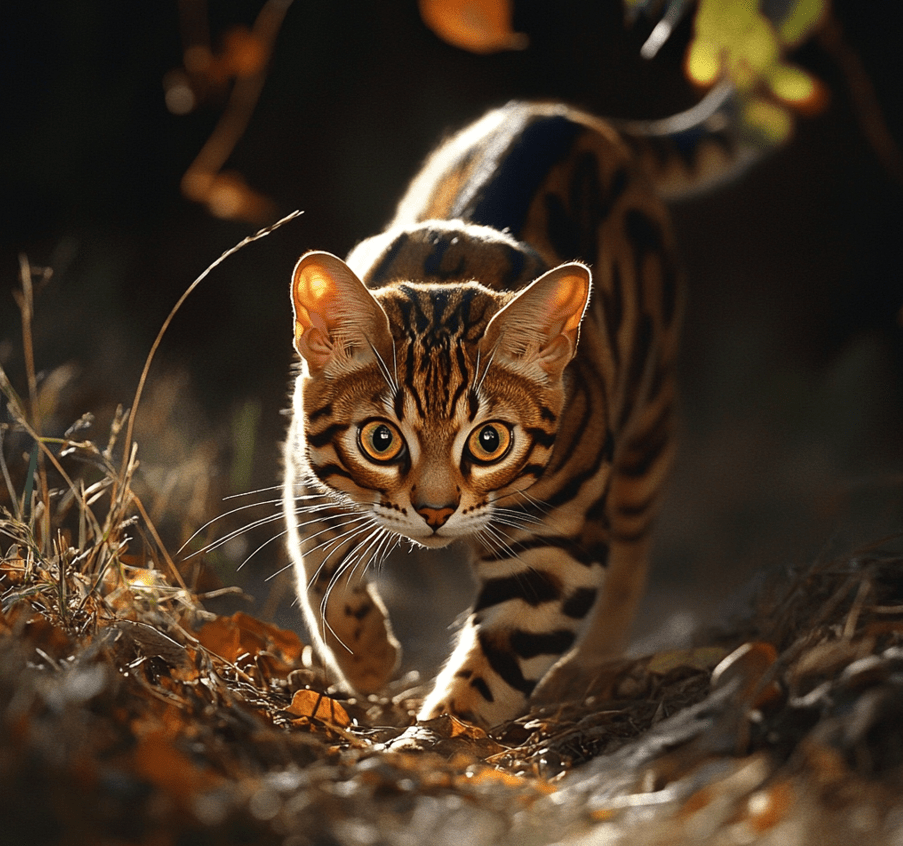
Your small sweet cat is a meat-eating predator. Yes, cats are very beautiful, we share our lives and homes with them, and the word predator sounds a bit extreme. But reality cannot be ignored:
A cat’s entire structure is like that of a predator. Hunting is their favorite activity. Their senses are designed to track prey, their excellent night vision, retractable claws, extraordinary capability for their size, teeth designed for tearing meat, and a spiky tongue for extracting every bit of meat from bones.
A cat’s digestive system is specialized for handling raw meat, as we reviewed above.
What Do Bengal Cats Eat in a Natural Setting?
In a natural environment, Bengal cats eat whole prey — birds, rodents, and insects — which gives them complete nutrition: muscle meat, organs, bones, and moisture. In domestic settings, replicating this diet with raw or balanced commercial options gives them the same health benefits. They do not need carbs or grains; those can lead to digestive issues and obesity. Always prioritize high-protein, moisture-rich, animal-based meals over dry kibble or plant-heavy foods.
A cat burns protein for energy. Unlike omnivorous animals (like humans), cats continuously burn protein for energy. Omnivorous animals will only burn protein when their diet contains abundant protein. If a cat doesn’t have sufficient protein, they will be forced to break down their own body’s protein for survival energy. Death from protein starvation can happen very quickly in cats.
Diet Options from Best to Worst
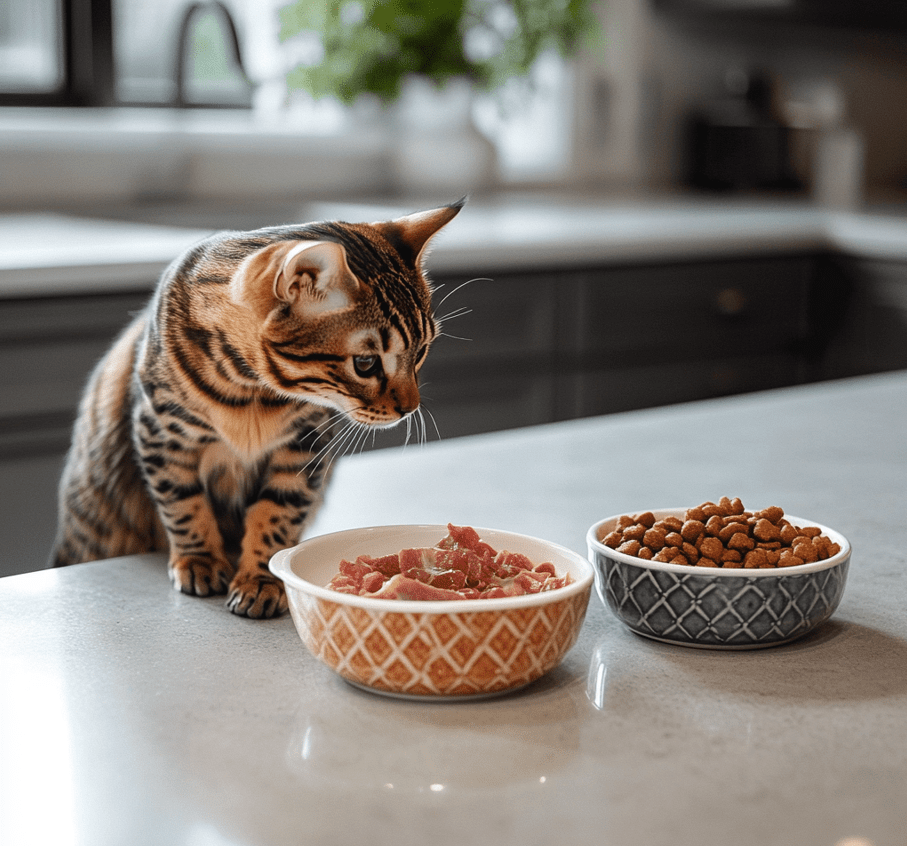
Diet for Bengal Cats: What to Know Before You Feed
Choosing the best diet for Bengal cats involves understanding their specific dietary needs. Bengals are more active and muscular than the average domestic cat, requiring higher protein and fat intake. Their food should never be plant-based and must include animal-based nutrients such as taurine, arachidonic acid, and vitamin A. Whether you’re feeding raw, homemade cooked, or canned, always ensure the food is labeled as complete and balanced.
Homemade Raw Food with Balanced Nutrition is the best option.
Two great aspects of making your cat’s food at home: you have complete control over ingredients and it’s very economical compared to canned food or pre-made raw food (for reference, pre-made raw food costs about $10/pound and you can make your own for $2/pound). Balance is key to this diet. To start, this means homemade raw food should have the right ratio of muscle meat to bones and organs, proper fat/protein/carb ratios, and plenty of taurine.
Commercial Balanced Raw Food is a great option.
These are typically found in the freezer section of your small local pet store. They should be labeled as complete food, not just a supplemental feed. Darwin’s, for example, allows you to buy pre-made raw food online and have it brought to you.
Dehydrated Raw or Commercial Cooked Food is a very good option.
Dehydrated raw food is less fresh than frozen raw food and just as expensive, but it’s a convenient alternative. It’s shelf-stable – you just need to add water. Commercially cooked food can be found in pet store freezers.
Canned Food is also good.
If you don’t want to prepare raw food and pre-made food is beyond your budget, you’ll want to opt for canned food. Canned food comes in varying qualities. Any canned food will be better than dry food due to moisture content.
Dry Food options
Not fresh, heavily processed, and sits on shelves for weeks or months. The primary issues are excessive carbohydrates, lack of adequate protein, and insufficient moisture.
Essential Nutrients and Components of a Bengal Cat Diet

A good diet for Bengal cats should have the right mix of:
1.Muscle meat
2.Organs/parts
3.Bones
4.Specifically, muscle meat is a good source of taurine – one of the amino acid’s cats cannot synthesize themselves, so it must be eaten.
5.Organs (heart, liver, kidney) provide essential nutrients and vitamins, for example (in small amounts) liver is a good source of vitamin A.
6.Dietary bones add essential calcium.
Simply put, Bengal cat food should contain the right types and amounts of protein, fat, vitamins, minerals, and water.
Protein and Fat:
1.Protein must come from animal sources to provide all essential amino acids. It’s a cat’s primary energy source.
2.Fats and fatty acids serve various roles including supplying some of a cat’s energy needs, transporting fat-soluble vitamins, and being components of cell structure and function.
Cats need arachidonic acid, which is only found in meat. Cats also cannot make vitamin A from plants – they must get it from other animals (meat). And cats need taurine, which is present in meat but not in plants.
Bengal Cat Raw Diet: What It Should Include
The ideal Bengal cat raw diet must be species-appropriate and balanced. This means it should include raw muscle meat for protein, organ meats like liver and heart for vital vitamins, and edible bones for calcium. Don’t forget essentials like omega-3 fatty acids from fish and supplements like taurine when necessary. Many Bengal owners report improved behavior, energy, and dental health on a raw regimen. Avoid overdoing liver and balance calcium-to-phosphorus ratios to avoid nutritional deficiencies.
What Food Should I Get for a Bengal Kitten?
When deciding what food to get for a Bengal kitten, choose a high-protein, low-carb formula with plenty of moisture. Kittens require more calories, calcium, and taurine per pound of body weight than adults. A raw diet adapted for kittens (finely ground and appropriately balanced) is ideal, or high-quality canned kitten food with named meat sources. Avoid feeding kibble as the main food — it lacks the moisture and amino acids growing Bengals need.
Bengal Kitten Diet: Building a Strong Foundation
A Bengal kitten diet sets the stage for lifelong health. During rapid growth phases, their bodies demand more protein, fat, and calcium. Whether feeding raw or commercial food, ensure it’s specially formulated for kittens or balanced manually if homemade. Key nutrients like taurine and DHA are essential for heart, eye, and brain development. Feeding multiple small meals daily supports their metabolism and keeps energy levels stable.
Considerations and Challenges of Raw Diet
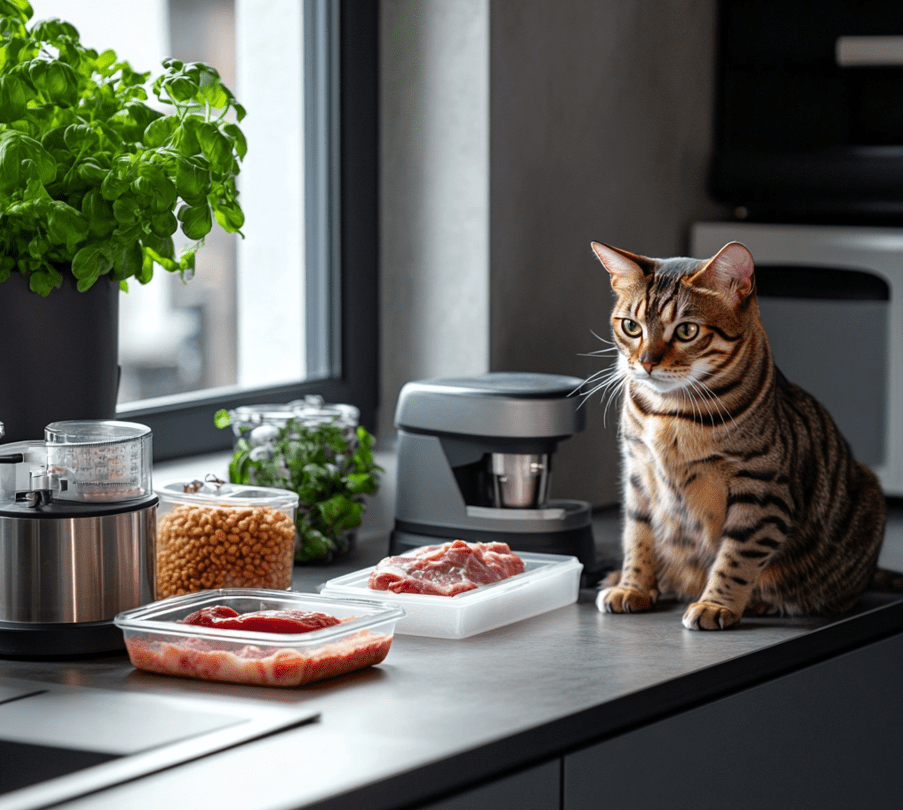
Not just in terms of source (chicken, turkey, rabbit etc.) but also where it came from. For example, thigh muscle meat is considered preferable to breast due to higher taurine content.
Some meats contain more bones than others, so you may need to add or remove to get the right amount. Some raw recipes suggest bone meal which is easier to handle, but this is not just an extra purchase, your Bengal will also miss out on the nutritional marrow.
You may need to buy equipment ranging from a meat grinder (especially if using whole bones) to proper and multiple storage containers and even kitchen scales.
Time: Removing bones, weighing everything, grinding, portioning, and cleaning takes more time than just opening a can.
To save time, raw food is often made in bulk, but this means having or finding adequate freezer space.
Buying organic meat will be more expensive than non-organic and you’ll need to consider recurring supplement costs and initial equipment expenses.
Your Bengal may be used to raw cat food, so it might take time and patience and some wasted food (if any) before your cat adapts.
Bengal Cat Dietary Needs: A Complete Overview
Understanding Bengal cat dietary needs is crucial for avoiding deficiencies and ensuring optimal health. These cats require more protein than most breeds and cannot synthesize essential nutrients like taurine, vitamin A, or arachidonic acid. Their diet should include a variety of meat sources — chicken, turkey, rabbit, or duck — and must be free of fillers, soy, or excessive carbs. Hydration is equally important, making raw or canned diets superior to dry kibble.
Raw meat can contain various parasites that can be harmful. However, this risk can be significantly reduced by buying high-quality meat for human consumption and freezing it once prepared.
Bacterial Infection: Feeding and handling raw meat carries infection risks for both cats and humans. This is why the Centers for Disease Control does not recommend feeding your cat raw food.
Benefits and Results of Raw Diet
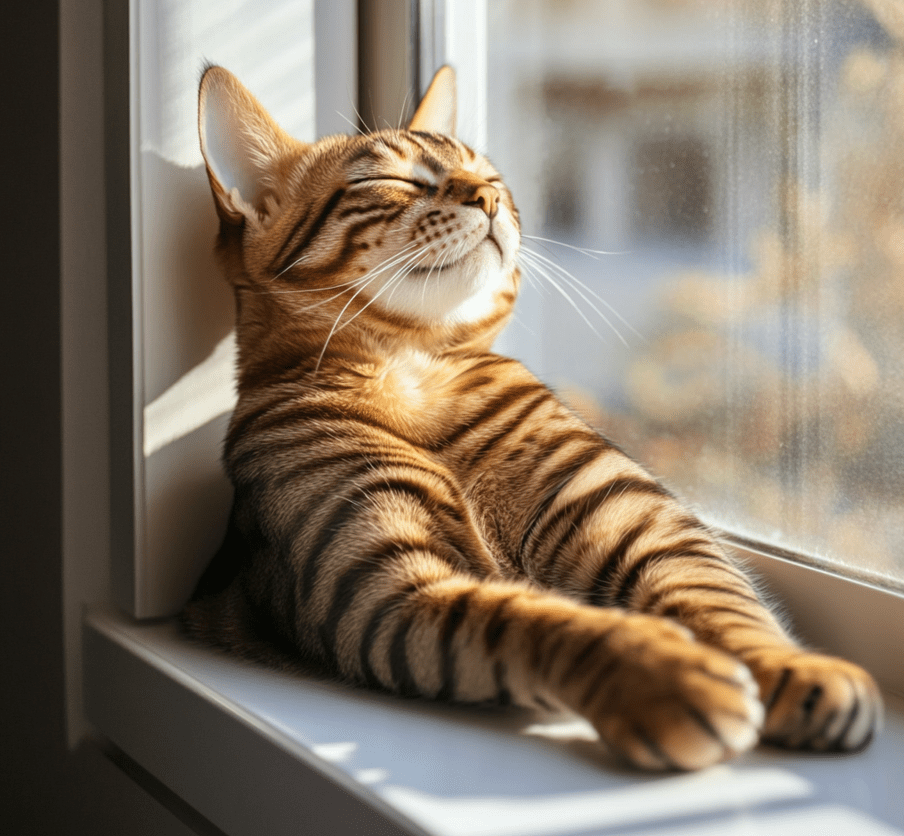
Feeding cats raw meat is the most logical, natural option. And as expected with humans, when a cat is fed what it’s designed to eat, notable differences can be seen. You’ll notice:
1.A shiny, smooth coat
2.Less shedding
3.More energy
4.Much less smelly stools!
Most veterinarians don’t support homemade raw food because they’ve likely seen the consequences of an unbalanced diet. Feeding an unbalanced diet can create serious health problems. You should take time to learn properly and know what you’re doing. But once you learn, it’s not too much work and it’s a great option for feeding your cats.
Why raw meat versus cooked? Cats can properly handle raw food, as we emphasized earlier. Cooking meat destroys some enzymes and nutrients, so feeding raw is ideal, which a cat typically eats without being served by their human servants.
Bengal Cat Raw Food Diet: Why It’s the Natural Choice
A Bengal cat raw food diet closely mirrors what these majestic felines would eat in the wild—muscle meat, bones, and organs. Because Bengal cats are obligate carnivores with high energy levels, a raw food diet supports their nutritional and metabolic needs better than processed food. Feeding raw also means providing essential amino acids like taurine, healthy fats, and moisture-rich meals that commercial diets often lack. Whether it’s turkey necks, chicken thighs, or rabbit organs, a properly balanced raw diet helps maintain a Bengal’s muscular build, shiny coat, and optimal digestion.
Before diving into making your own food, you’ll want to be fully prepared and educated, but don’t let fear deter you from that option. Once you learn, making your own cat food is easy. It’s not particularly enjoyable, but the fun part is seeing how much the fur-babies love it and thrive on it.
Bengal Cat Diet: Final Thoughts on Feeding Right
The Bengal cat diet should be as close as possible to what they would eat in the wild. Avoid plant-based or carb-heavy foods and focus on raw or wet options that mirror their biological needs. The right balance of muscle meat, organs, and bones not only fuels their energy but supports immune function, digestion, and long-term health. Always consult with a feline nutritionist or vet when making major dietary changes.

